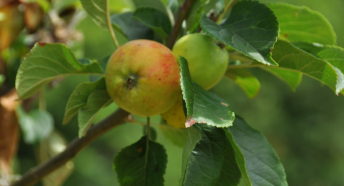Flitwick Moor, a Bedfordshire wetland
We take a look at a very special Bedfordshire place and important wetland habitat – Flitwick Moor.
Between 2005 and 2007 CPRE Bedfordshire worked with the Wildlife Trust, The Greensand Trust, Flitwick Town Council and Mid Bedfordshire District Council to help protect this important site from development. As a result of that successful campaign, local residents continue to enjoy the beauty and tranquillity of the area.
The reserve is a Site of Special Scientific Interest, cottongrass, ten species of sphagnum moss and marsh pennywort grow here. In summer you can find meadowsweet, purple loosestrife and St. John’s-wort. The possibility of hearing water rail and warblers attracts birdwatchers, the site is also rich in insects and fungi. Flitwick Moor is now managed by The Wildlife Trusts.

Iron Rich Flitwick Water
In around 1859, Henry King Stevens took over the tenancy of a house and nearly twenty-two acres of land known as ‘The Folly’, on the outskirts of Flitwick. He became convinced that the springs that flowed through his land possessed healing powers. He began to sell the water locally at 2d a bottle and was keen for the medical profession to acknowledge its potential. Locally, the water became increasingly popular with people travelling long distances to soak cloths in the springs.
In 1885, ‘Flitwick Water’ secured the highest award at the National Health Society Exhibition yet Mr Stevens still had to convince the doctors that he had discovered a valuable medicine. He continued to submit samples until in 1891, an article in the ‘Lancet’ journal brought complete success. In the article the water was described as having a clear sherry colour with a very high iron content and of having a temperature of 45 degrees at all times of the year.

A London depot was established and advertisements were placed in magazines and the national press but sadly Mr Stevens died in 1898 before he could realise the full extent of his ambitions. The estate was sold to R.W. White & Company, a soft drinks manufacturer based in London.
The ‘Flitwick Chalybeate Company’ was formed and the fame of ‘Flitwick Water’ spread. However, as large manufacturing chemists began to develop more efficient substitutes, the appeal of ‘Flitwick Water’ gradually lessened and by the 1930s very little was being produced.
Peat Extraction
Peat extraction took place here for hundreds of years and continued into the 1960s when the peat was used for gas purification and agricultural top dressing.

Exploring the site today
The Two Moors Heritage Trail is a gentle walk which provides a good introduction to the landscape of the area. The route passes several sites of interest for their wildlife or history – information boards provide details along the way.
Download a map of the reserve and find out more about the wildlife via the Wildlife Trust’s information page for the site.
More from CPRE
The bog blog: everything you never knew you needed to know about peat
Peat: the ‘soggy soil’ that could make net-zero carbon emissions possible






